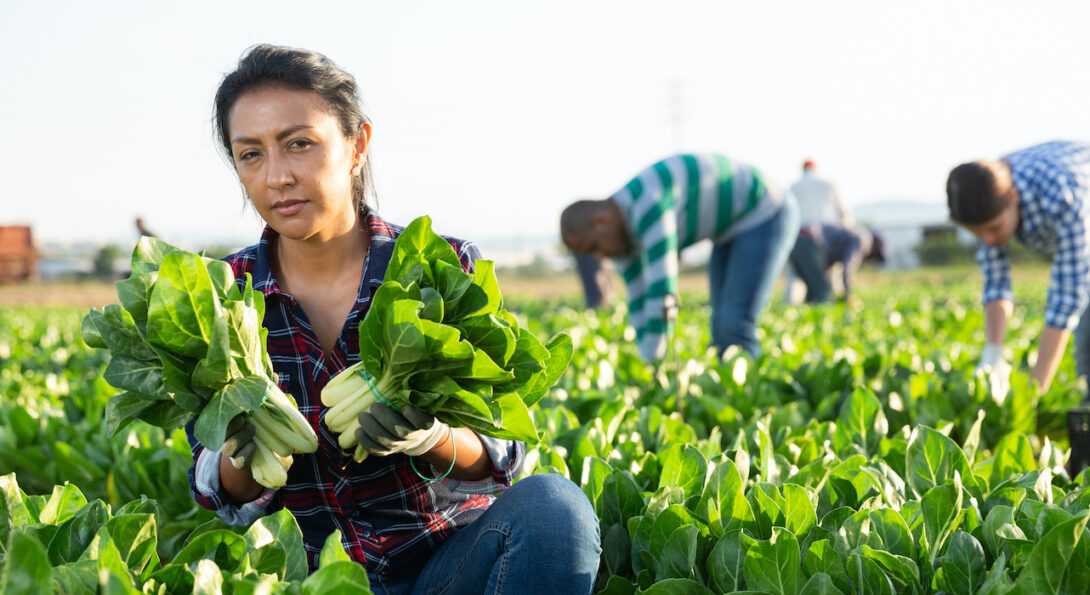Improving Research Quality with a New Farmworker Health Survey Tool

Soon, researchers can expand their toolbox of methods to better understand farmworker wellbeing.
To create policies, programs, and services that improve farmworkers' quality of life, we first need to have a better understanding of the various factors that impact their health and wellbeing. When conducting surveys, they must reflect farmworkers' unique work contexts and allow them to candidly share their experiences. Researchers at our Center are working toward this goal.
This project adapts the Worker Well-being Questionnaire (the Worker WellBQ) from the National Institute for Occupational Safety & Health (NIOSH) to more specifically determine the issues important to farmworkers. New survey domains/questions might also better apply to precarious workforces in general. The research team has rigorously translated the tool into Spanish and will test it to make sure the questions satisfy their intended purpose. This work will produce both findings about farmworkers in Illinois and provide an off-the-shelf survey tool for future research.
Project purpose
Why we need a farmworker health survey tool that measures wellbeing.
Hired farmworkers face many challenges to wellbeing, and many of those challenges are different than what other groups of workers experience. Their work exposes them to dangerous chemicals, equipment, weather conditions, and other hazards. And yet, federal law does not afford them the same protections that other workers enjoy. They often work long hours for low wages with no overtime pay and no benefits like paid leave and health insurance. Outside of work, many farmworkers live in poverty with poor-quality housing and little social support. Plus, many face discrimination based on their ethnicity or perceived immigration status. These conditions make it hard for farmworkers and their families to survive and thrive.
Our Center aims to improve farmworker wellbeing at work and outside of work. To track our progress, we need a way to collect data about the conditions that shape farmworkers’ lived experiences. That’s where the WellBQ comes in. NIOSH recognized that wellbeing is about more than just the absence of illness and injury. So, they developed the Worker WellBQ to measure worker wellbeing in a more holistic way. The WellBQ asks questions about a person’s health and work experiences, such as job satisfaction. It also asks about aspects of the work environment, like how concerned the employer is for employees’ health.
This tool is helpful because it focuses on the workplace as a key shaper of wellbeing but doesn’t ignore other important influences like home and community. However, since it was designed for the overall workforce, it needs adjustments to better capture information about some topics affecting hired farmworkers, particularly.
Key concepts
Why the tool needs to measure work history and job insecurity.
Farm work as a whole is dangerous, but the specific dangers differ across work settings. For example, pesticide applicators work with dangerous chemicals. Workers tending livestock can get sick from illnesses that jump across species. Orchard harvesters work on ladders and risk falling. And repetitive motions and lifting heavy loads can cause injuries for vegetable pickers. Knowing the hazards a worker faces is important for understanding their health status and concerns.
In addition to these physical dangers, farm work is very stressful. Hired farmworkers often feel anxious about losing their jobs or not being rehired next season, which can take a heavy toll on workers’ bodies and minds. That’s why the survey tool also introduces a section on job insecurity. Data from the expanded survey will help us document how common these physical and mental health burdens are among farmworkers. Once we know more about the realities of their lives, we can recommend policy and program changes to better serve them.
Farmworker engagement
Engaging farmworkers in building the farmworker health survey.
The Center’s outreach partners will play a key role in inviting farmworkers to join the project. Community Health Partnership of Illinois, Shawnee Health Services, and Legal Aid Chicago will help the research team meet and talk with farmworkers. We expect to learn a lot by collaborating with hired farmworkers to help shape the research that affects them. Be sure to stay tuned for future updates, as we will share our key takeaways as guidance for other researchers.